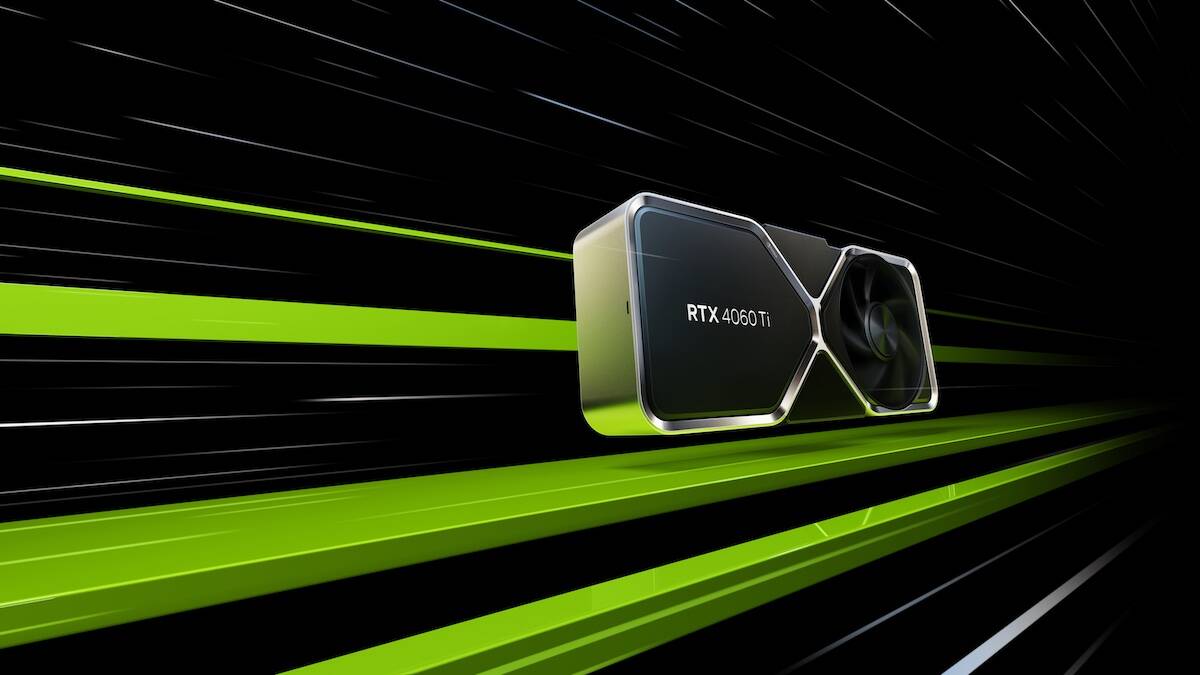
Unrelenting demand for AI accelerators fueled an 843 percent year-over-year surge in profit for Nvidia in the three months to July 30.
During that second quarter of its fiscal 2024 year, the GPU giant recorded $6.2 billion in net income on revenues of $13.5 billion, double that of the year-ago quarter.
You might be thinking Nvidia’s figures look strong this year because we’re comparing them to a bum previous year – and in 2022 it was complaining about pandemic-related supply-chain headaches upsetting its business units – but if you look at the numbers, the semiconductor titan really does seem to be on a roll lately.
| Fiscal period | Revenue | Profit |
|---|---|---|
| Q2 2019 | $3.1B | $1.1B |
| Q2 2020 | $2.6B | $552M |
| Q2 2021 | $3.9B | $622M |
| Q2 2022 | $6.5B | $2.4B |
| Q2 2023 | $6.7B | $656M |
| Q2 2024 | $13.5B | $6.2B |
We’ll dig into those numbers a little later this week; for now, here’s a summary of today’s financial disclosure.
The massive uptick in sales was driven in no small part by strong demand for Nv’s Hopper and Ampere GPUs, thousands of which are stitched together, often using its InfiniBand networks, to train large language models like OpenAI’s GPT-4. This was evidenced by the chip designer’s revenues from its HGX and other datacenter gear, which topped $10.3 billion during the quarter, up 171 percent from the year prior.
“Our cloud service providers drove exceptionally strong demand for HGX systems in the quarter as they undertake a generational transition to upgrade their datacenter infrastructure for the new era of accelerated computing and AI,” Nvidia CFO Colette Kress said on Wednesday’s earnings call.
The majority of these sales originated in the United States, though Kress was quick to point out that the 20-25 percent of datacenter revenues coming from China were within historical norms. Chinese cloud providers are eager to get their hands on Nvidia accelerators, even the nerfed ones, and have reportedly ordered north of $5 billion of A800 GPUs for delivery between now and 2024 to fuel their AI ambitions. That is, unless US regulators crack down harder on the export of AI accelerators to China before then.
Kress addressed these concerns and made the case that today’s rules, which activated last fall, were “achieving the intended results.” By that we think she’s diplomatically saying the restrictions on semiconductor exports into China are having an effect, but it’s nothing to really worry about, and there’s really no need for any changes there.
But there may be something to worry about: just last month US lawmakers called on the Biden administration to crack down further on the export of AI hardware into the Middle Kingdom.
“Given the strength of demand for our products worldwide, we do not anticipate that additional export restrictions on our datacenter GPUs, if adopted, would have an immediate material impact towards financial results, ” Kress said.
“However, over the long term, restrictions prohibiting the sale of our datacenter GPUs to China, if implemented, will result in a permanent loss of an opportunity for the US industry to compete and lead in one of the world’s largest markets.”
But while Nvidia soared on datacenter sales during the quarter, the US giant’s other segments had mixed results. Gaming revenues topped $2.5 billion during the quarter, up 22 percent on Q2 last year, and up a more modest 11 percent compared to Q1 FY2024.
Kress said the numbers reflected stronger sales of the company’s 40-series desktop and notebook GPUs, particularly the budget focused RTX 4060 it launched in May.
Nv’s professional visualization division, which includes its workstation GPUs, fell 24 percent year over year during the quarter, raking in $379 million, but enjoyed a 28 percent bump compared to Q1 FY2024. It was a similar situation for Nvidia’s automotive segment, which earned $253 million in the quarter, down 15 percent sequentially and up by the same margin compared to last year. Nvidia blamed this volatility in auto sales on reduced demand in the Chinese market.
Looking ahead to the next earnings call, Nvidia doesn’t expect the AI wave to break anytime soon. For Q3 FY2024, the biz is forecasting revenues of $16 billion plus or minus two percent. Nv’s stock is up more than six percent to $503.46 apiece in after-hours trading.
“Demand for our data center platform for AI is tremendous and broad based across industries and customers,” Kress said, adding that the corporation is working to ramp up production of datacenter GPUs to meet this demand over the next few quarters. ®
- SEO Powered Content & PR Distribution. Get Amplified Today.
- PlatoData.Network Vertical Generative Ai. Empower Yourself. Access Here.
- PlatoAiStream. Web3 Intelligence. Knowledge Amplified. Access Here.
- PlatoESG. Automotive / EVs, Carbon, CleanTech, Energy, Environment, Solar, Waste Management. Access Here.
- PlatoHealth. Biotech and Clinical Trials Intelligence. Access Here.
- ChartPrime. Elevate your Trading Game with ChartPrime. Access Here.
- BlockOffsets. Modernizing Environmental Offset Ownership. Access Here.
- Source: https://go.theregister.com/feed/www.theregister.com/2023/08/24/nvidia_fy2024_q2_profits/
- :is
- :not
- $2.5 billion
- $UP
- 11
- 15%
- 2022
- 2024
- 22
- 24
- 28
- 30
- 46
- a
- About
- accelerated
- accelerators
- achieving
- across
- activated
- adding
- Additional
- administration
- adopted
- ahead
- AI
- ambitions
- an
- and
- anticipate
- any
- ARE
- AS
- At
- auto
- automotive
- based
- BE
- because
- before
- between
- biden
- Biden Administration
- Billion
- biz
- Break
- broad
- budget
- business
- but
- by
- call
- case
- Center
- cfo
- Changes
- China
- chinese
- Chinese market
- chip
- Cloud
- CO
- coming
- company
- compared
- comparing
- compete
- computing
- Concerns
- CORPORATION
- crack
- Customers
- data
- Data Center
- Datacenter
- delivery
- Demand
- Designer
- desktop
- DIG
- disclosure
- Division
- do
- does
- doesn
- double
- down
- driven
- during
- eager
- earned
- Earnings
- earnings call
- effect
- Era
- Ether (ETH)
- Even
- evidenced
- expect
- export
- exports
- few
- Figures
- financial
- Fiscal
- focused
- For
- from
- Fuel
- fueled
- further
- gaming
- Gear
- generational
- get
- giant
- given
- GPU
- GPUs
- had
- Hands
- harder
- Hardware
- Have
- having
- headaches
- here
- historical
- However
- HTTPS
- if
- immediate
- Impact
- implemented
- in
- includes
- Income
- industries
- industry
- Infrastructure
- intended
- into
- IT
- ITS
- jpg
- July
- just
- Kingdom
- language
- large
- largest
- Last
- Last Year
- lately
- later
- lawmakers
- lead
- like
- little
- ll
- Long
- Look
- loss
- made
- Majority
- Margin
- Market
- Markets
- massive
- material
- May..
- Meet
- Middle
- might
- million
- mixed
- models
- modest
- Month
- months
- more
- Need
- net
- networks
- New
- next
- no
- norms
- North
- notebook
- nothing
- now
- numbers
- NV
- Nvidia
- of
- often
- on
- ONE
- OpenAI
- Opportunity
- or
- originated
- Other
- our
- out
- over
- part
- particularly
- percent
- permanent
- platform
- plato
- Plato Data Intelligence
- PlatoData
- plus
- Point
- previous
- Prior
- Production
- Products
- professional
- Profit
- profits
- providers
- Q1
- Q2
- Q3
- Quarter
- Quick
- Ramp
- RE
- really
- recorded
- Reduced
- reflected
- Regulators
- restrictions
- result
- Results
- revenues
- Roll
- rtx
- rules
- s
- Said
- sale
- sales
- same
- saying
- Second
- second quarter
- seem
- segment
- segments
- semiconductor
- service
- service providers
- she
- similar
- situation
- SIX
- small
- soared
- something
- Soon
- States
- stock
- strength
- strong
- stronger
- SUMMARY
- surge
- Systems
- T
- term
- than
- that
- The
- the world
- their
- Them
- then
- There.
- These
- they
- Think
- Thinking
- this
- this week
- this year
- those
- though?
- thousands
- three
- titan
- to
- today
- together
- topped
- towards
- Trading
- Train
- transition
- tremendous
- two
- undertake
- United
- United States
- units
- upgrade
- us
- US Lawmakers
- US Regulators
- using
- visualization
- Volatility
- was
- Wave
- we
- Wednesday
- week
- were
- which
- while
- will
- within
- working
- workstation
- world
- worldwide
- worry
- would
- year
- you
- zephyrnet











